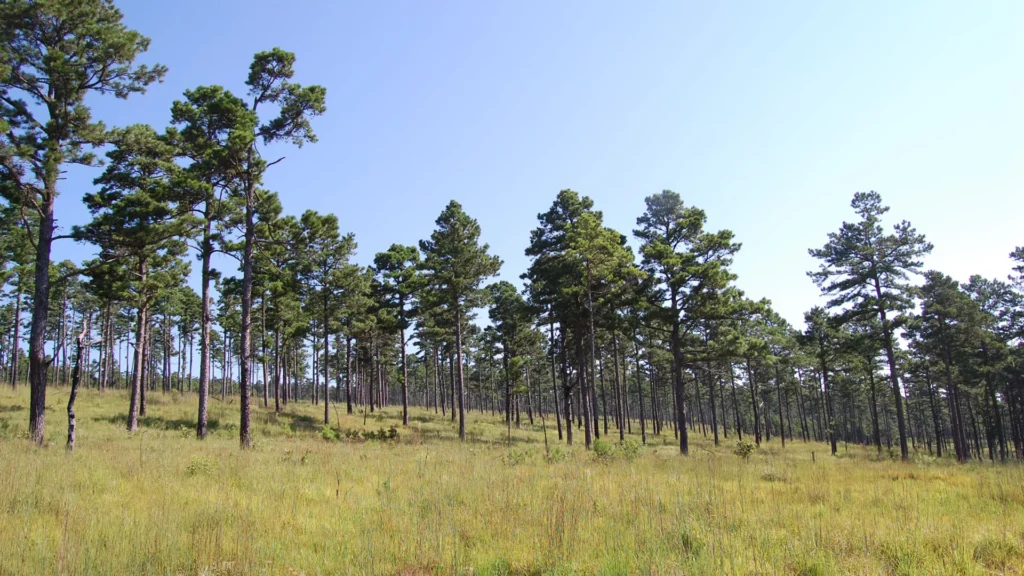
Pushmataha WMA covers 19,247 acres of northern Pushmataha County in the southeastern part of Oklahoma. Located approximately five miles south of Clayton, Pushmataha WMA is on the western fringe of the Ouachita mountain range and is comprised of a mixture of oak/pine forest and oak/pine savannahs with steep slopes, shallow soils and rocky terrain.
In areas where the canopy has been released, all four major prairie grasses exist with numerous forbs and native legumes. There have been over 650 varieties of native plants identified on the area. Some of the native tree species you will encounter are shortleaf pine, post oak, red oak, black oak, hickory, elm, blackgum, sweetgum, rusty blackhaw, flowering dogwood, and hawthorne. You will also encounter high bush huckleberry, low bush huckleberry, different varieties of sumac, coralberry, poison ivy, green brier, blackberry and many others. The average annual precipitation for the area is about 52 inches.
Game Species of Interest
- Deer: White-tailed deer exist in good numbers but are heavily sought after.
- Quail: Bobwhite quail are present in fair numbers.
- Elk: A small encapsulated elk herd exists with permits offered through the controlled hunts program.
- Turkey: Eastern wild turkeys are present in fair numbers but are heavily sought after.
- Rabbit: Cottontails are present but not usually in large numbers.
- Furbearers: Coyote, bobcat, opossum, skunk and raccoon are available.
- Dove: Occur for short periods of time during their annual migration.
- Waterfowl: A few wood ducks and mallards may be found on the ponds and on Caney Creek.
- Woodcock: Occur in relatively low numbers.
- Squirrel: Fox and gray squirrels are usually present in good numbers.
- Bear: Low population of black bears.
Non-Game Species of Interest
- Bachman’s Sparrow: Present on the WMA.
- Brown Creeper: Present, but only in very low numbers.
- Owls: Several species of owls may be observed on the area. The Screech owl is a favorite.
- Eastern Wood Pewee: Is also a favorite of bird watching enthusiasts.
- Reptiles & Amphibians
Management Practices
Timber stand improvements within the mixed oak/pine forest are progressing and maintained with an aggressive prescribed burning regime. Management efforts focus on producing native wildlife foods such as ragweed and sunflower and maintaining the woody structure height for a variety of wildlife species. In 1982, one of the longest running research projects regarding vegetation response to fire frequency was initiated and continues on the area today. Tours of the research area are available by appointment to interested landowners, organizations, agencies, clubs, associations, and other interested groups and individuals.
Camping / Facilities
Two designated primitive camping areas are offered on the area.
Three shooting ranges are available to anyone who possesses a current hunting license. The rifle range offers 25, 50, 100 and 200 yard target frames. A pistol range is available as well as a place to set up a trap and do some trap shooting. No target shooting is allowed on the area except at the designated shooting ranges.
For more information, visit the Oklahoma Department of Wildlife Conservation website.
